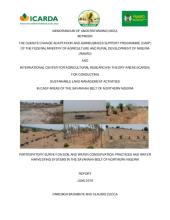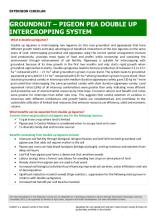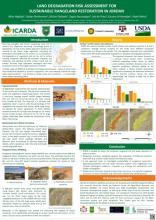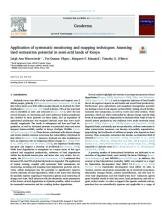/ library resources
Showing items 1 through 9 of 18.This paper argues and provides empirical evidence that trade-offs and/or complementarities are
inherent in technological options that shape the adoption of and land-use decisions in production
systems involving multiple crops in Ethiopia. By applying a fractional response model to a
The Climate Change Adaptation and Agribusiness Support Programme (CASP) of the Federal Ministry of Agriculture and Rural Development of Nigeria (FMARD) aims at mainstreaming climate change adaptation measures in the savannah belt of Northern Nigeria, through a landscape rehabilitation approach fo
Cropland abandonment is globally widespread and has strong repercussions for regional
food security and the environment. Statistics suggest that one of the hotspots of abandoned cropland
Widespread heat waves, floods, and droughts last year were a strong reminder of the threats posed by climate change. In the non-tropical dry areas where ICARDA works we are becoming accustomed to record high temperatures and increasing water scarcity year on year.
The agricultural development on newly reclaimed lands has led to many national debates about food
security and budget deficits, and the living conditions of the new settlers at the local level. This debate
Stipagrostis pungens is a perennial grass species which belongs to the Poaceae family. It is usually found with several erect culms, grows up to 1.5 m in height, and forms substantial tufts.
Double up legumes is intercropping two legumes (in this case groundnut and pigeonpea) that have different growth habits and takes advantages of beneficial interactions of the two legumes on the same piece of land.
Rangeland Hydrology and Erosion Model (RHEM) was used to explore three different rangeland states’ implications on water and soil fluxes.
Drylands cover over 40% of the earth's surface and support over 2 billion people, globally (Millennium Ecosystem Assessment, 2005).
Pagination
Land Library Search
Through our robust search engine, you can search for any item of the over 73,000 highly curated resources in the Land Library.
If you would like to find an overview of what is possible, feel free to peruse the Search Guide.









